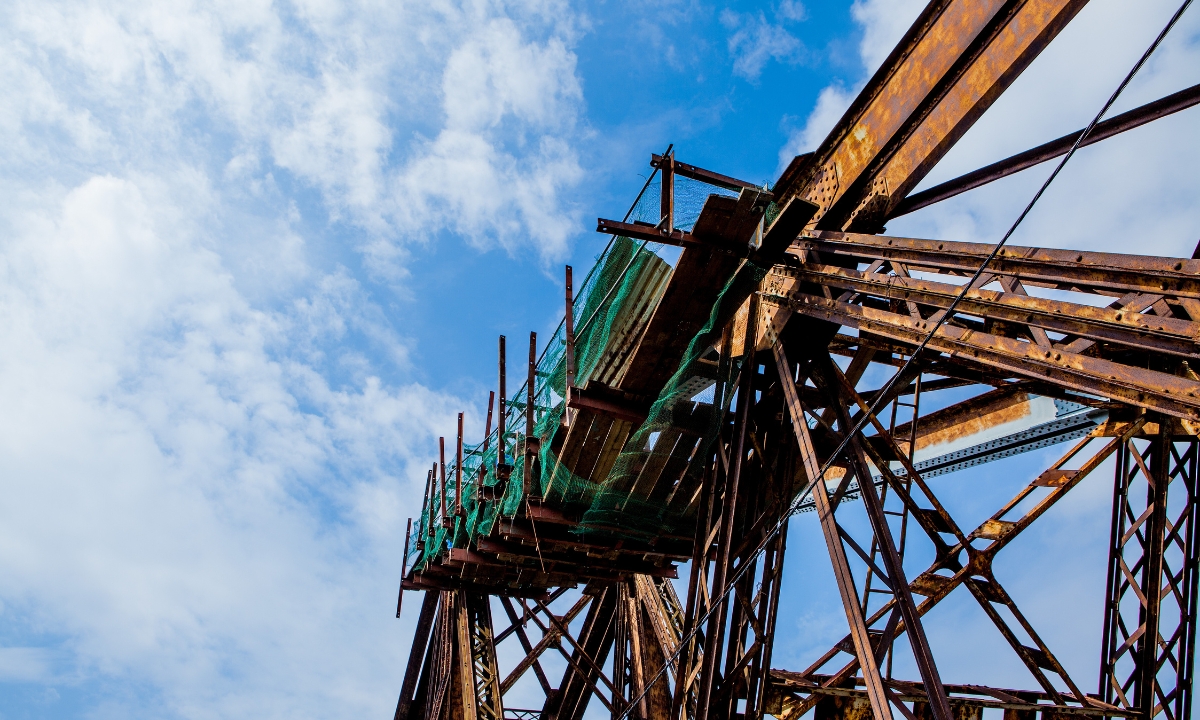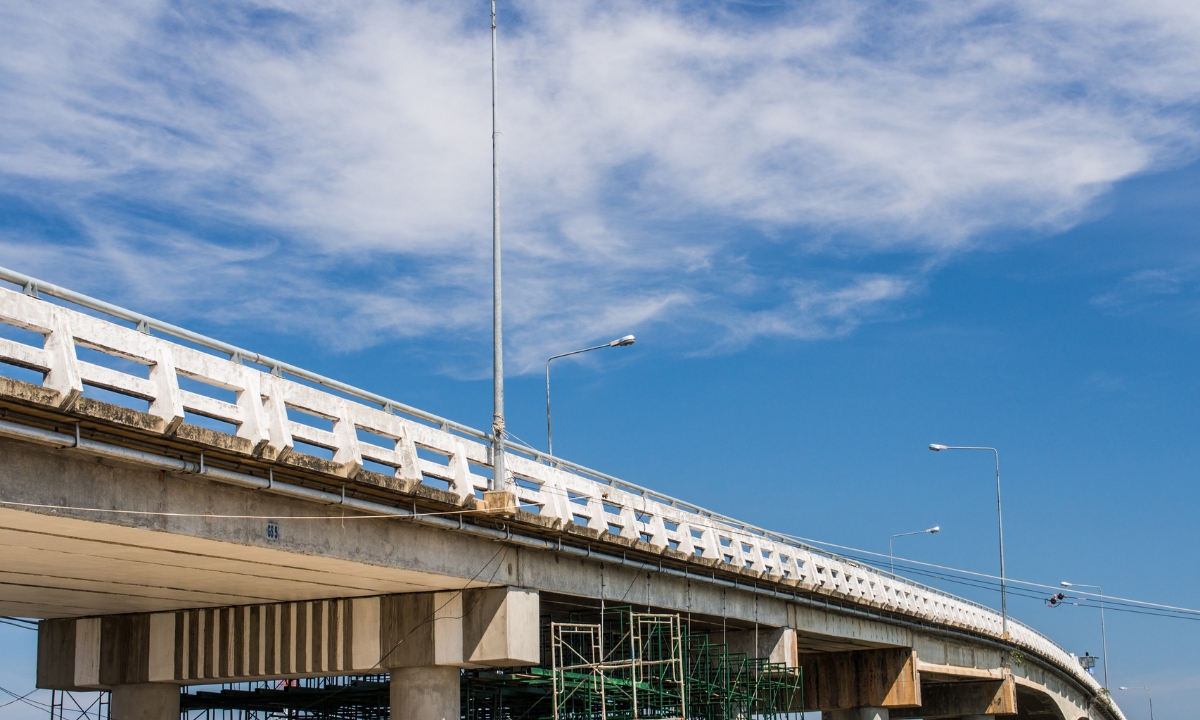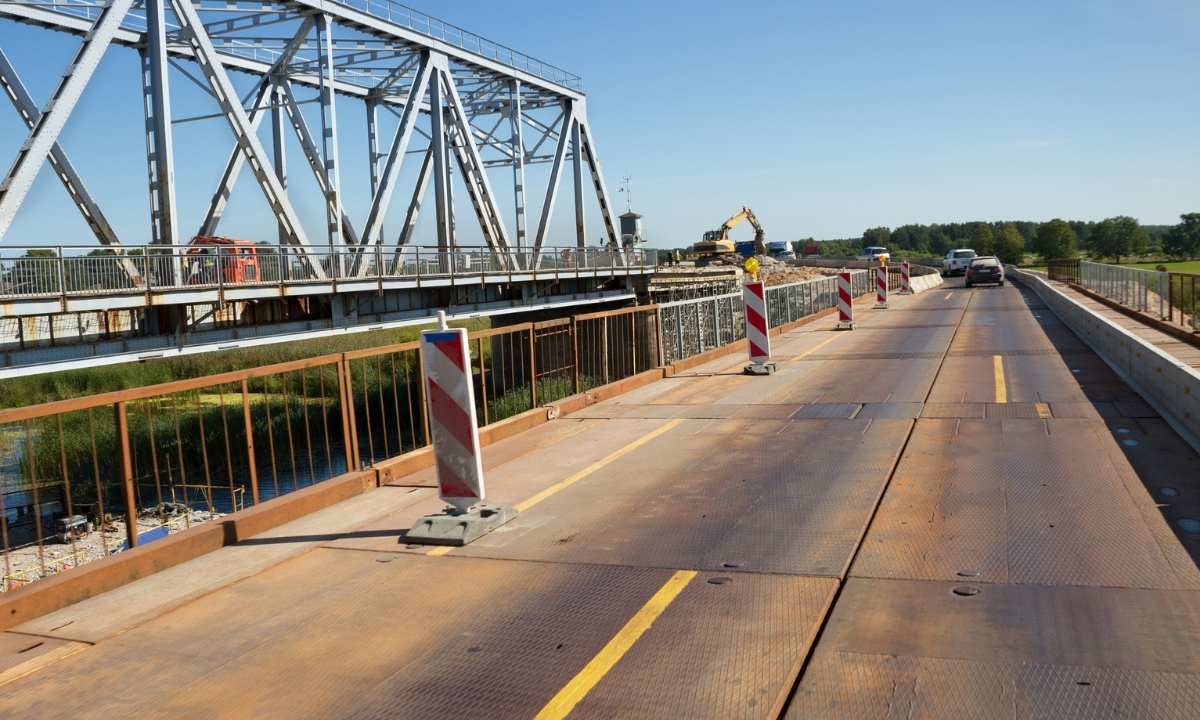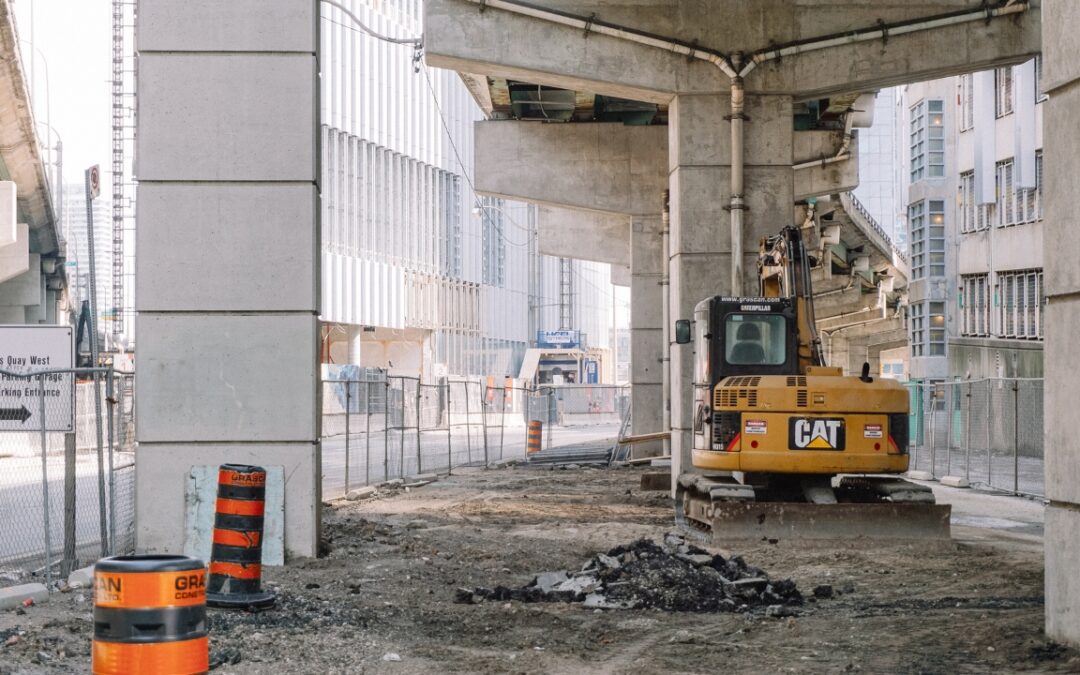Highway bridges are the arteries of our transportation network, carrying people and goods across rivers, valleys, and other obstacles. As these structures age, they inevitably face wear and tear, requiring periodic rehabilitation to ensure their safety and functionality.
However, bridge rehabilitation projects often present numerous infrastructure challenges, hindering efficiency and potentially posing safety risks. This is where under bridge platforms emerge as an essential component, offering innovative solutions to overcome these obstacles and revolutionize the approach to bridge rehabilitation and bridge maintenance.

Understanding Bridge Rehabilitation Challenges
Bridge rehabilitation – whether that’s a highway bridge spanning a river in the Midwest or an urban infrastructure project – encompasses a diverse range of activities aimed at restoring or upgrading a bridge’s structural integrity and functionality.
However, these projects often encounter several common challenges including:
- Limited access: The underside of bridges is often difficult to reach, posing logistical challenges for workers and equipment. Traditional methods like scaffolding or rappelling can be time-consuming, unsafe, and limit maneuverability.
- Complex repairs: Depending on the extent of damage, rehabilitation projects may involve intricate repairs, requiring precise inspection and execution in confined spaces.
- Traffic disruptions: Bridge closures or lane restrictions during rehabilitation can significantly impact traffic flow and cause delays, inconveniencing commuters and businesses.
- Safety hazards: Working at heights and in close proximity to traffic poses inherent safety risks for construction crews, requiring stringent safety measures and protocols.
The complexity of these challenges can vary depending on several factors, such as the severity of bridge damage, the type of bridge and its design, and the factors of urban versus rural environments.
The Role of Under Bridge Platforms in Overcoming These Challenges
Under bridge platforms are specifically designed to address the limitations of traditional methods and overcome the challenges associated with bridge rehabilitation projects. These mobile platforms offer a safe, efficient, and versatile solution.
For example, under bridge platforms provide safe and direct access to the bridge soffit (underside), eliminating the need for risky access methods and enabling workers to maneuver freely beneath the bridge structure. In addition, these platforms provide a stable and spacious work area, allowing workers to perform complex repairs comfortably and efficiently with the necessary tools and equipment readily available. In addition, they support efficiency in rehabilitation.
Another benefit they provide is improved safety. Modern under bridge platforms incorporate safety features like guardrails, slip-resistant surfaces, and emergency stop buttons, significantly reducing the risk of accidents and injuries for workers.
And, finally, by streamlining access and expediting work processes, under bridge platforms can help minimize traffic disruptions and project execution timelines.
By addressing these challenges, under bridge platforms significantly contribute to the success of bridge rehabilitation projects, ensuring safety, efficiency, and cost-effectiveness.
Prioritizing Safety: Regulations and Measures
Safety is paramount in any bridge rehabilitation project, and under bridge platforms play a crucial role in upholding this principle. They are designed and manufactured in compliance with strict safety regulations and standards set by organizations like the Occupational Safety and Health Administration (OSHA) and the American National Standards Institute (ANSI). These regulations cover various aspects, including:
- Platform design and construction standards
- Load capacity limitations
- Fall protection and guardrail requirements
- Emergency procedures and training
Furthermore, project managers and construction companies are responsible for implementing various safety measures, including:
- Conducting thorough safety briefings for all personnel involved in the project
- Utilizing personal protective equipment (PPE) as mandated by regulations
- Regularly inspecting and maintaining the under bridge platform to ensure its functionality and safety
By adhering to safety regulations and implementing appropriate measures, bridge rehabilitation projects can be conducted with minimal risk to maintenance crews and the public during bridge construction work.

Streamlining Rehabilitation with Efficiency
Efficiency is crucial for successful and cost-effective bridge rehabilitation projects. Under bridge platforms offer several advantages that significantly contribute to streamlining the process.
One significant advantage is the reduced setup and teardown time. Compared to traditional access methods, under bridge platforms can be deployed and retracted much faster, minimizing downtime and allowing for more work to be completed within a given period.
In addition, these platforms provide immediate and unrestricted access to previously difficult-to-reach areas, enabling workers to move freely and efficiently throughout the work area, minimizing the need for repositioning the platform.
And enhanced collaboration and communication can be key, as well. Because the platform provides a centralized work area, this can facilitate better communication and collaboration between workers, enhancing problem-solving and task completion.
These efficiency gains, combined with improved safety and reduced disruptions, contribute to significant cost savings in bridge rehabilitation projects.
Utilizing Innovative Technology
Modern under bridge platforms are no longer just mobile platforms; they are integrated with cutting-edge technologies that further enhance the efficiency and effectiveness of bridge rehabilitation projects:
- High-definition cameras and lighting systems: These systems provide clear and detailed visual inspection of the bridge soffit, even in low-light conditions, enabling precise identification of damage and facilitating communication with remote teams.
- LiDAR (Light Detection and Ranging) scanners: LiDAR scanners create detailed 3D models of the bridge structure, allowing engineers to assess the extent of damage, measure specific features, and plan repairs with greater accuracy.
- Data logging and reporting systems: These systems enable real-time data collection and reporting on various parameters, such as platform location, load distribution, and environmental conditions, providing valuable insights for project management and future reference.
By utilizing these innovative technologies, under bridge platforms empower construction crews with the necessary tools for efficient and informed decision-making throughout the rehabilitation process.
Collaboration is Key: Construction Crews and Maintenance Teams
Successful bridge rehabilitation requires seamless collaboration between various stakeholders, including construction crews and bridge maintenance teams. Under bridge platforms facilitate this collaboration by providing improved communication. Because a platform provides a shared workspace, this can foster closer communication between construction crews and maintenance personnel, allowing for efficient exchange of information and feedback.
In addition, by providing thorough documentation and detailed inspections facilitated by the platform’s technology, the transition from construction to routine maintenance can be streamlined, as well, ensuring a smooth handover and continuous bridge health monitoring.
Effective cooperation between construction and maintenance teams is crucial for ensuring the long-term success of bridge rehabilitation projects and the overall health of the infrastructure.
Adapting to Challenges: Urban Infrastructure and Diverse Environments
Bridge rehabilitation projects in urban areas present unique challenges due to space constraints and the need to minimize disruptions to densely populated areas. Under bridge platforms offer several advantages in addressing challenges such as compact and flexible design and reduced downtime.
Furthermore, under bridge platforms are also adaptable to diverse environmental conditions as many platforms are designed to operate safely and efficiently in various weather conditions, including rain, snow, and wind, minimizing project delays due to weather disruptions.
In addition, under bridge platforms can often be equipped with remote control capabilities, allowing for operation in hazardous environments or during off-peak hours, further minimizing traffic disruptions and enhancing safety.
By offering adaptability and flexibility, under bridge platforms can be effectively utilized in diverse urban and environmental settings.
Future Perspectives: Advancements and Improvements
The landscape of bridge rehabilitation is continuously evolving, and advancements in under bridge platform technology offer exciting possibilities for the future:
- Autonomous platforms: Platforms equipped with autonomous navigation and inspection capabilities could potentially perform specific tasks independently, further reducing risks for human crews and enabling even more efficient rehabilitation processes.
- Integrated repair capabilities: Under bridge platforms could be integrated with advanced robotic arms or other tools, allowing for semi-autonomous or remote-controlled repair tasks, potentially minimizing manual intervention in hazardous environments.
- Real-time data analysis and visualization: Integration with advanced data analytics and visualization tools could enable real-time assessment of repair progress and potential issues, facilitating informed decision-making and adaptive project management approaches.
These potential advancements promise to revolutionize bridge rehabilitation by further enhancing safety, efficiency, and the overall effectiveness of these crucial infrastructure maintenance projects.
A Solid Foundation for Bridge Rehabilitation and Repairs
Advanced under bridge platforms have emerged as an impetus in bridge rehabilitation, offering a comprehensive solution that addresses numerous challenges and revolutionizes the approach to maintaining our vital infrastructure.
By providing safe, efficient, and technology-driven access to the underside of bridges, these platforms contribute to enhanced safety, improved efficiency, sustainable infrastructure management, data-based decision making, and cost-effectiveness.
Looking ahead, advancements in under bridge platform technology hold immense promise for further revolutionizing bridge rehabilitation.
With increased autonomy, integrated repair capabilities, and real-time data analysis, these platforms will undoubtedly play a vital role in ensuring the safety and longevity of our bridges, paving the way for a more efficient and sustainable future for infrastructure maintenance.

Helping You Navigate Highway Bridge Challenges with Under Bridge Platforms
Choosing the right under bridge inspection vehicle holds the key to project success. Tailored capabilities meeting specific structural and terrain demands are pivotal factors that can easily outweigh mere cost considerations.
And Partnering with a trusted professional ensures a precise match for your project’s needs. At Under Bridge Platforms, our commitment spans the Western States, including California, Washington, and Oregon. Explore our broad inventory featuring top-grade snooper trucks and innovative under bridge access platforms, including the cutting-edge Truck Mounted Hydra Platform HPT43.
As the exclusive provider of comprehensive under bridge access solutions in California, we take pride in our unmatched customer service. Our enduring partnerships with esteemed clients speak volumes about our steadfast dedication.
Feel free to contact us today regarding your unique requirements. Your bridge inspections merit the best equipment available, and we’re here to turn that expectation into reality.


Recent Comments